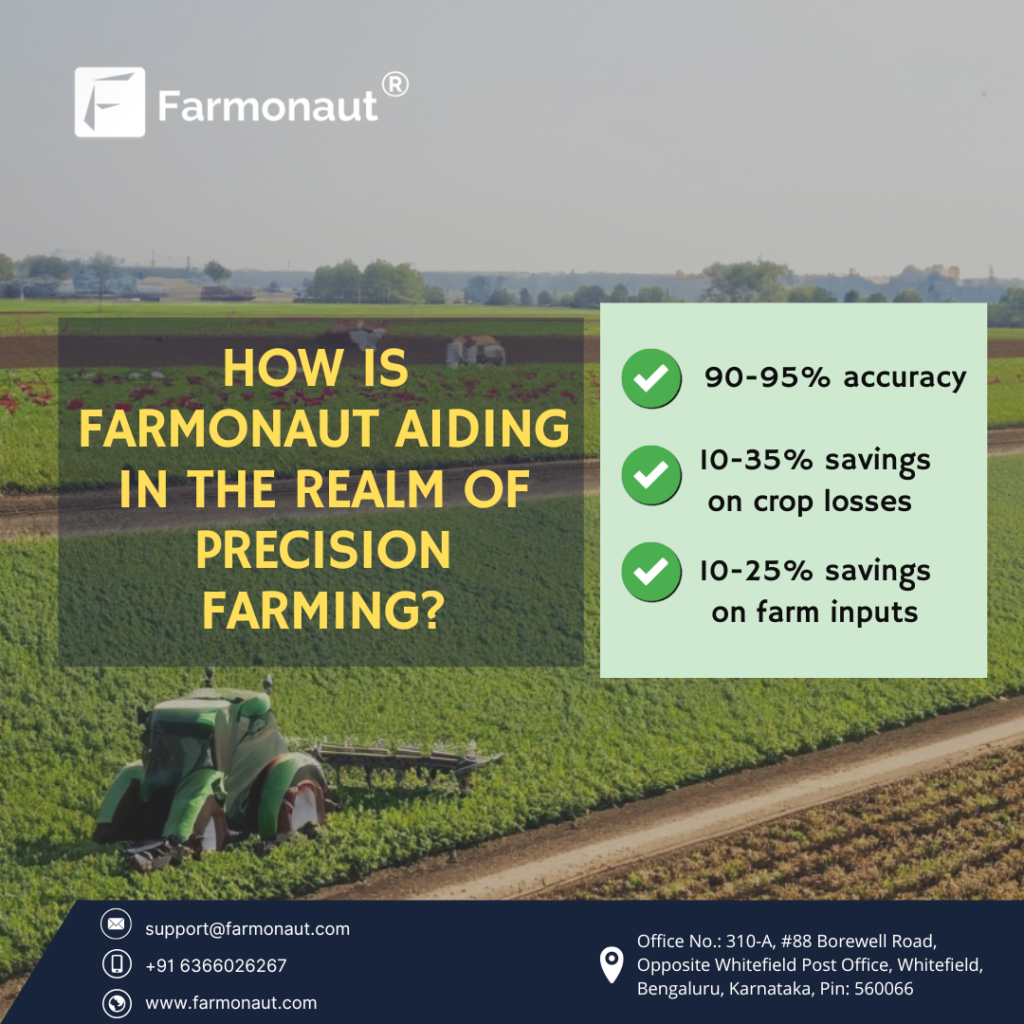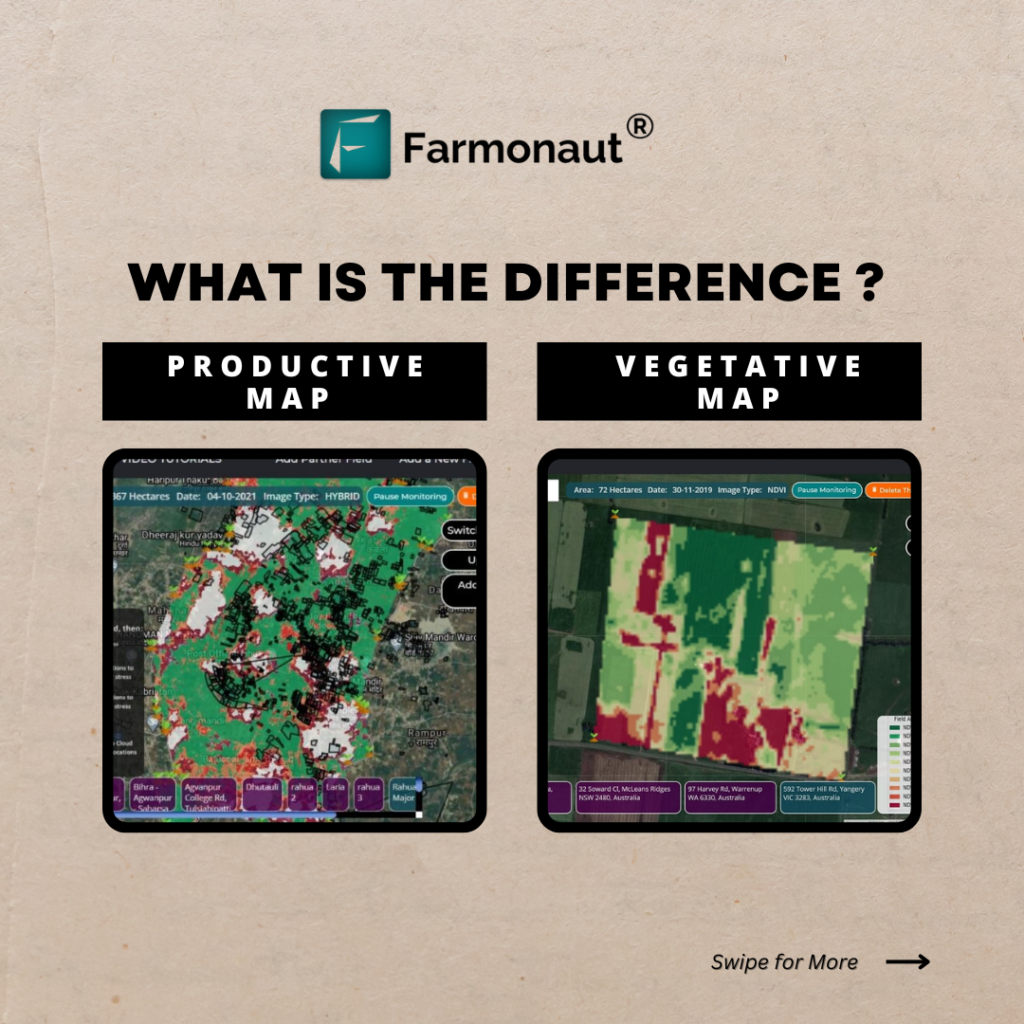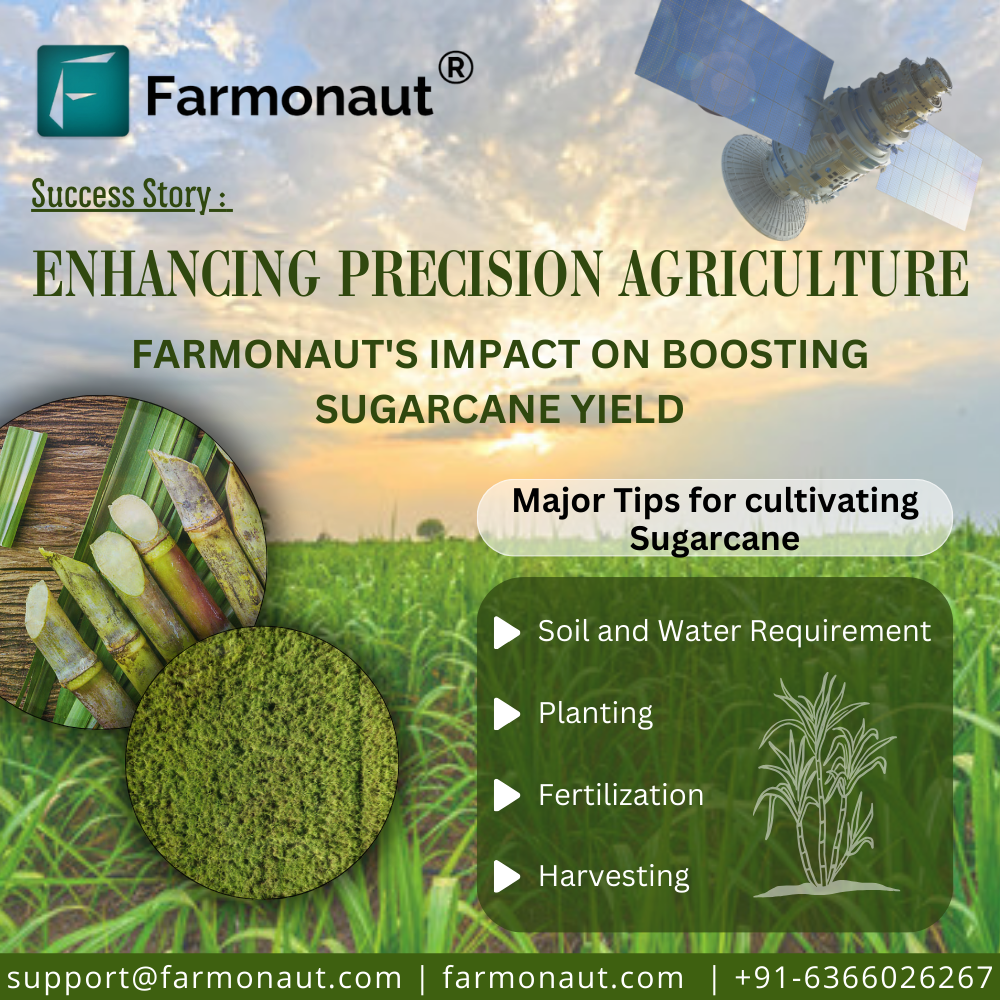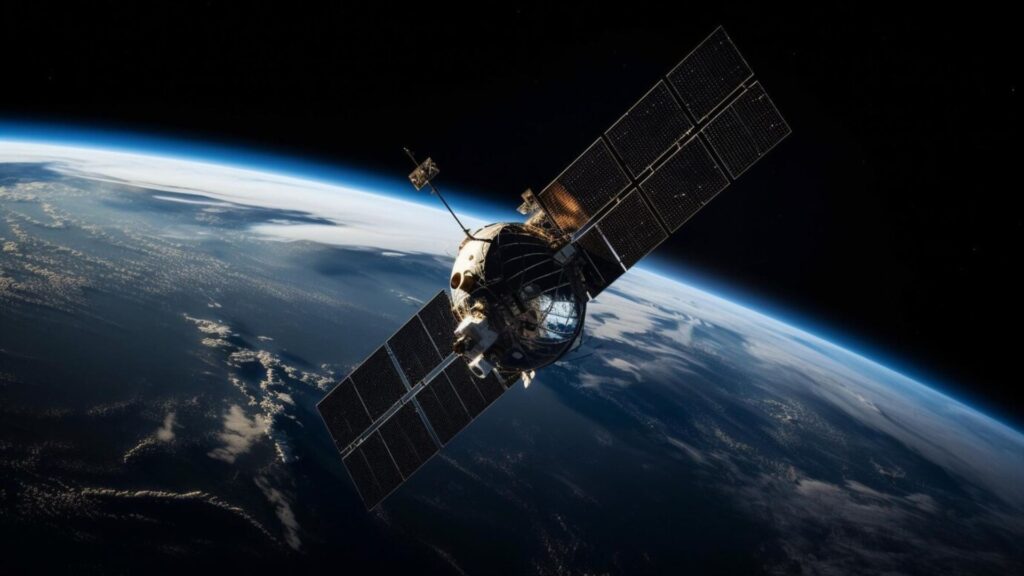Revolutionizing Kansas Farms: How Satellite Crop Monitoring and Precision Agriculture Boost Yield and Sustainability
“Satellite crop monitoring can increase farm yields by up to 20% through precise resource allocation and timely interventions.”
In the heartland of America, Kansas farms are undergoing a remarkable transformation. The integration of precision agriculture and satellite crop monitoring is revolutionizing farming practices, ushering in a new era of productivity and sustainability. As we delve into this technological revolution, we’ll explore how these cutting-edge agtech solutions are reshaping the agricultural landscape of the Sunflower State.
The Dawn of Precision Agriculture in Kansas
Kansas, known for its vast fields of winter wheat, corn, and soybeans, has long been a cornerstone of American agriculture. However, the challenges of unpredictable weather patterns, soil variation, and resource management have pushed farmers to seek innovative solutions. This is where precision agriculture and satellite technology come into play, offering a data-driven approach to farming that promises to optimize yields while promoting environmental stewardship.
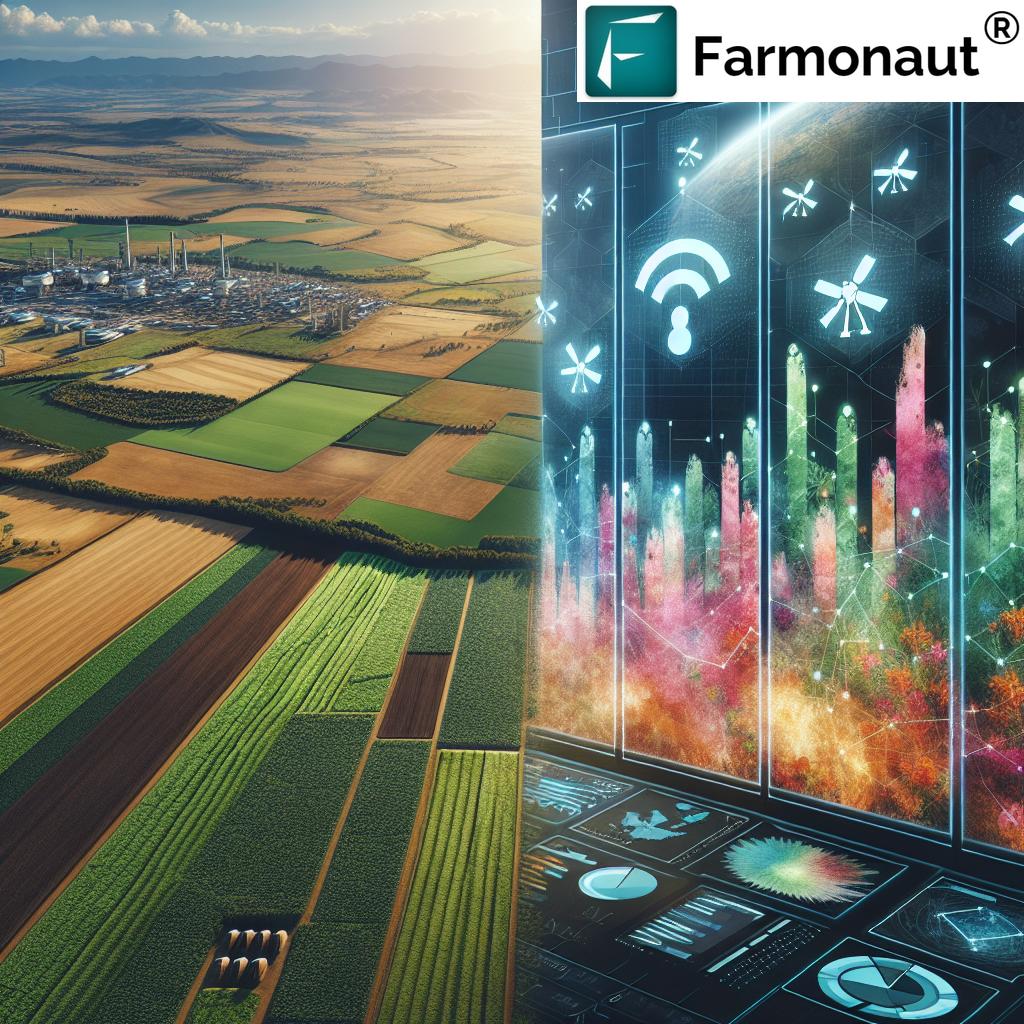
Satellite Crop Monitoring: Eyes in the Sky for Smarter Farming
Satellite crop monitoring has emerged as a game-changer for Kansas farmers. By harnessing the power of remote sensing in agriculture, farmers can now gain unprecedented insights into their fields without setting foot on them. Here’s how it works:
- Real-time Crop Health Analysis: Satellites equipped with multispectral sensors capture detailed images of farmland, allowing for comprehensive crop health analysis.
- Vegetation Index Mapping: Advanced algorithms process satellite data to create vegetation index maps, providing a visual representation of crop vigor across entire fields.
- Early Problem Detection: By regularly monitoring fields from space, farmers can identify issues such as pest infestations, disease outbreaks, or nutrient deficiencies before they become visible to the naked eye.
The integration of satellite technology with precision agriculture practices is transforming how Kansas farmers approach their operations. Let’s explore some of the key applications:
Soil Fertility Mapping: The Foundation of Precision Agriculture
Soil fertility mapping is a cornerstone of precision agriculture, enabling farmers to understand the nuances of their land like never before. By combining satellite imagery with on-ground soil testing, farmers can create detailed maps that showcase:
- Soil pH levels
- Nutrient concentrations
- Organic matter content
- Soil texture and structure
These maps serve as the basis for implementing variable rate fertilization strategies, allowing farmers to apply nutrients precisely where they’re needed most. This targeted approach not only optimizes crop growth but also minimizes environmental impact by reducing excess fertilizer runoff.
Yield Optimization Through Precision
The ultimate goal of precision agriculture is yield optimization. By leveraging satellite data and on-ground sensors, Kansas farmers can make informed decisions that lead to increased productivity. Here’s how:
- Farm Field Zoning: Satellite imagery helps in creating management zones within fields, allowing for tailored interventions based on specific area needs.
- Prescription Maps: Using historical yield data and current field conditions, farmers can generate prescription maps for variable rate applications of seeds, fertilizers, and pesticides.
- Crop Growth Monitoring: Regular satellite observations enable farmers to track crop phenology and adjust management practices accordingly.
“Precision agriculture techniques can reduce fertilizer use by 30% while maintaining or improving crop productivity.”
The implementation of these techniques has led to significant improvements in crop yields across Kansas. Winter wheat farmers, for instance, have reported yield increases of up to 15% when using precision agriculture methods.
Agricultural Data Management: The Backbone of Smart Farming
Agricultural data management is crucial for making sense of the vast amount of information generated through satellite monitoring and on-field sensors. Advanced farm productivity tools help Kansas farmers in:
- Aggregating and analyzing data from multiple sources
- Creating actionable insights for day-to-day farm operations
- Forecasting yields and planning for future seasons
- Optimizing resource allocation based on historical patterns and current conditions
These tools not only improve decision-making but also contribute to the overall efficiency of farm management.

Sustainable Farming Practices: A Win-Win for Farmers and the Environment
The adoption of precision agriculture and satellite monitoring in Kansas is not just about increasing yields; it’s also about promoting sustainable farming practices. Here’s how these technologies contribute to environmental stewardship:
- Water Conservation: Satellite-based soil moisture monitoring allows for precise irrigation scheduling, reducing water waste.
- Reduced Chemical Use: By targeting problem areas with precision, farmers can minimize the use of pesticides and herbicides.
- Soil Health Preservation: Variable rate applications help maintain optimal soil nutrient levels, preventing degradation over time.
- Carbon Footprint Reduction: Efficient resource use leads to lower fuel consumption and reduced greenhouse gas emissions.
These practices align with the growing consumer demand for sustainably produced food and position Kansas farmers at the forefront of eco-friendly agriculture.
The Role of Aerial Imagery in Modern Agriculture
Aerial imagery for agriculture complements satellite data by providing higher resolution images at critical times. Drones equipped with RGB and multispectral cameras offer Kansas farmers:
- Detailed views of crop emergence patterns
- Early detection of pest and disease hotspots
- Assessment of storm or drought damage
- Precise plant population counts
This technology allows for rapid response to field issues, further enhancing the benefits of precision agriculture.
Harnessing the Power of Farmonaut’s Satellite Technology
At the forefront of this agricultural revolution is Farmonaut, a company dedicated to making precision agriculture accessible to farmers worldwide. Farmonaut’s platform offers a suite of tools that leverage satellite technology to provide valuable insights for Kansas farmers:
- Real-time Crop Health Monitoring: Using multispectral satellite imagery, Farmonaut provides up-to-date information on crop health, helping farmers identify and address issues promptly.
- AI-driven Advisory System: The Jeevn AI system offers personalized recommendations based on satellite data and local conditions, assisting farmers in making informed decisions.
- Resource Management Tools: Farmonaut’s platform includes features for efficient fleet and resource management, helping agribusinesses optimize their operations.
By integrating these advanced technologies, Farmonaut is helping Kansas farmers boost productivity while promoting sustainable practices.
The Future of Farming: Smart Farming Technology
Smart farming technology is set to play an increasingly important role in Kansas agriculture. As we look to the future, we can expect to see:
- Integration of AI and machine learning for more accurate yield predictions
- Advanced sensors for real-time monitoring of soil and crop conditions
- Automated farm machinery guided by satellite positioning systems
- Blockchain technology for improved traceability in the agricultural supply chain
These advancements will further enhance the efficiency and sustainability of farming operations across the state.
Overcoming Challenges in Adoption
While the benefits of precision agriculture and satellite crop monitoring are clear, some challenges remain in their widespread adoption:
- Initial Investment: The cost of implementing new technologies can be a barrier for some farmers.
- Technical Knowledge: There’s a learning curve associated with using advanced agricultural tools and interpreting data.
- Connectivity Issues: Some rural areas may face challenges with reliable internet access, which is crucial for real-time data transmission.
- Data Privacy Concerns: Farmers may have reservations about sharing detailed farm data with technology providers.
Addressing these challenges will be crucial for the continued growth and success of precision agriculture in Kansas.
The Economic Impact of Precision Agriculture in Kansas
The adoption of precision agriculture and satellite crop monitoring is having a significant economic impact on Kansas farms:
- Increased Profitability: By optimizing inputs and improving yields, farmers are seeing higher profit margins.
- Reduced Operational Costs: Efficient resource use leads to lower expenses for fuel, fertilizers, and pesticides.
- New Job Opportunities: The demand for skilled technicians and data analysts in agriculture is growing.
- Enhanced Competitiveness: Kansas farms using these technologies are better positioned in the global agricultural market.
As more farms embrace these technologies, we can expect to see a positive ripple effect throughout the state’s economy.
Access Farmonaut’s API Developer Docs
Precision Agriculture Benefits: Traditional vs. Farmonaut Satellite System
| Metric | Traditional Farming | With Farmonaut Satellite System |
|---|---|---|
| Crop Yield Increase (%) | 0-5% | 10-20% |
| Water Usage Efficiency (%) | 60-70% | 80-90% |
| Fertilizer Optimization (%) | 10-15% | 25-30% |
| Pest Detection Accuracy (%) | 50-60% | 80-90% |
| Time Saved on Field Scouting (hours/week) | 0-2 | 5-10 |
Conclusion: A Bright Future for Kansas Agriculture
The integration of satellite crop monitoring and precision agriculture techniques is transforming Kansas farms, leading to increased yields, improved sustainability, and enhanced profitability. As these technologies continue to evolve and become more accessible, we can expect to see even greater advancements in the way we grow food and manage agricultural resources.
For Kansas farmers looking to stay ahead of the curve, embracing these innovative solutions is no longer just an option—it’s a necessity for success in the modern agricultural landscape. By leveraging the power of satellite technology and data-driven decision-making, Kansas farms are well-positioned to meet the challenges of feeding a growing global population while preserving the land for future generations.
Farmonaut Subscriptions
FAQ Section
Q: What is precision agriculture?
A: Precision agriculture is a farming management concept that uses technology to observe, measure, and respond to variability in crops. It involves using satellite imagery, GPS technology, and sensors to optimize farm inputs and increase efficiency.
Q: How does satellite crop monitoring work?
A: Satellite crop monitoring uses images captured by satellites to assess crop health, growth stages, and field conditions. These images are processed to create vegetation indices and other metrics that farmers can use to make informed decisions about their crops.
Q: What are the benefits of using Farmonaut’s satellite technology for Kansas farmers?
A: Farmonaut’s technology offers real-time crop health monitoring, AI-driven advisory systems, and resource management tools. This helps Kansas farmers optimize their yields, reduce input costs, and implement more sustainable farming practices.
Q: How can precision agriculture improve sustainability in farming?
A: Precision agriculture promotes sustainability by enabling more efficient use of resources like water and fertilizers, reducing chemical runoff, and minimizing soil degradation. It also helps in reducing the carbon footprint of farming operations.
Q: Is precision agriculture cost-effective for small and medium-sized farms in Kansas?
A: Yes, with solutions like Farmonaut, precision agriculture has become more accessible and cost-effective for farms of all sizes. The long-term benefits in terms of increased yields and reduced input costs often outweigh the initial investment.





